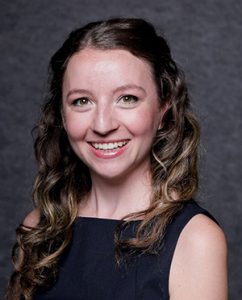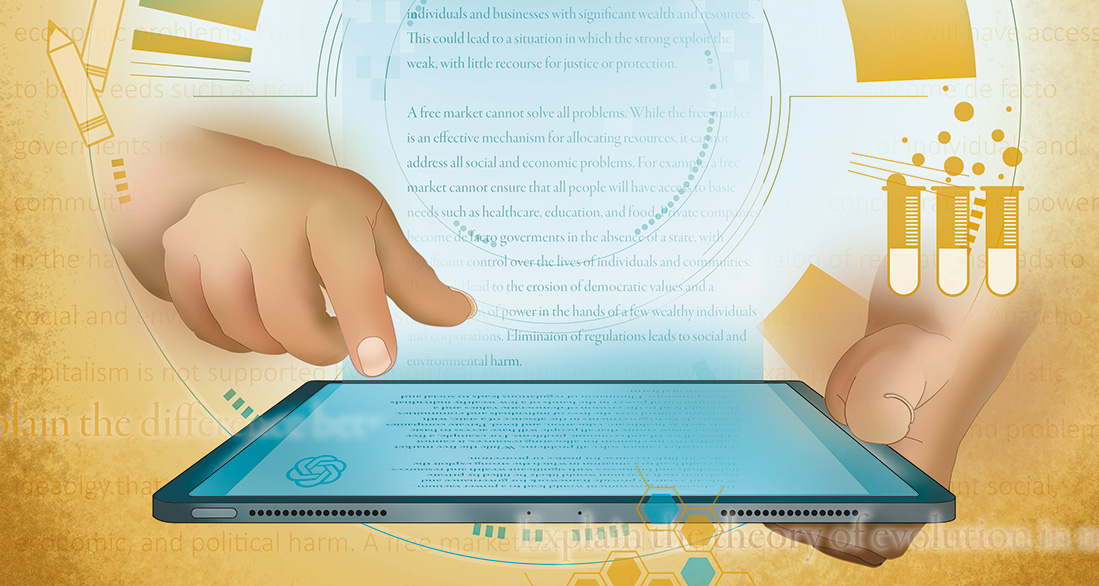Will ChatGPT be used for good or ill in American classrooms?
It’s just a fad.
That’s what was said about the Internet, at first. Now we can’t live without it.
Which brings us to the next big thing: ChatGPT, the technology that allegedly is coming to take over writing as we know it.
Launched in November 2022, ChatGPT is an artificial intelligence program created by OpenAI. It gathers information from the worldwide web to answer questions, write college-level essays, compose letters and poems, and write just about anything a human tells it to. According to the OpenAI website, it has the power to “answer follow-up questions, admit its mistakes, challenge incorrect premises, and reject inappropriate requests.”
‘A hammer can chisel a great piece of art or it can destroy’ — Bradley University Professor Seth Katz
“It will inevitably have an impact on the classroom,” said Seth Katz, PhD, a professor of English at Bradley University.
Since it gathers information from all over the web, ChatGPT potentially redefines what plagiarism and sources of truth will look like in all areas of education.
Will ChatGPT destroy learning?
The initial worry among many educators and school administrators is that AI technology capable of writing essays on any topic will become an easy way out for students.
Andy Davis, PhD, a history teacher at Peoria High School, surveyed his students and found that the general consensus was that ChatGPT “would make their lives a lot easier, and that was all that mattered.”
These students represent a growing trend. Survey results from Stanford University suggest that in its first few months, scores of students had already used ChatGPT on their final exams.
“At this point, ChatGPT is only capable of spewing back information in response to a submission. It only knows what words should come next. It’s very formulaic … But it has no sense of personality or human sensibility. It cannot think,” Katz said.
The initial reaction is that the thinking is the learning. ChatGPT is a vehicle to get from point A to point B. But in education, there’s an old adage: “It’s not about the destination; it’s about the journey.”
A tool for good, or bad?
Some educators say that when students cheat, it’s the student alone who suffers. By taking the easy way, they’ve sabotaged themselves out of something valuable.
“It’s up to students to take ownership of their own learning. That requires the willpower to use tools like these for good. Because ChatGPT is capable of bad, yes, but it is also capable of good,” Katz explained. “A hammer can chisel a great piece of art or it can destroy. ChatGPT can, likewise, destroy and create good.”
Many local professors and high school teachers realize that ChatGPT will be prevalent, and probably already is. So, it’s important to flip the narrative and use ChatGPT to aid in education rather than undermine it.
Pete Smudde, PhD, a professor in the School of Communications at Illinois State University, suggested that educators be proactive about informing students of the pros and cons of this kind of technology.
“Equipping students with the knowledge of how to use this technology and what the barriers are that come along with it will help them to know what they’re getting themselves into when they use it. They’ll know what they’re losing and gaining, and that empowers them to make an informed decision on whether or not to use it.”
The alternative that many professors and teachers are turning to is having students use ChatGPT as a starting point. Students can tell the AI program to write about a topic and then the student must take that piece of writing and analyze, critique and rewrite the assignment.
At Bradley University, faculty members are engaged in conversations about this technology as it evolves and trying to ascertain what the future might bring. ISU has developed a webpage that clearly states that AI-generated content cannot be passed off as a student’s original work, which would be a breach of the university’s academic integrity policy.
But that doesn’t preclude students and teachers from using the technology in other ways in the pursuit of education.
For teachers who want to combat ChatGPT in their classrooms, there are still the tried-and-true models to lean into: collaborative discussion, reading, lecture, and good old fashioned pen-and-paper notetaking.
Human or bot?
Could the technology become more sophisticated? Absolutely. There may come a day in the not-so-distant future when a chatbot can create a piece of writing virtually indistinguishable from the human variety. But as of now, robots have not been able to replicate human personality and emotion.
Inevitably, as AI technology continues to evolve, so will the tools necessary to weed it out.
“I, like many others, had a very negative initial reaction to ChatGPT. I assumed that it would immediately be abused and used by students to cheat on assignments,” said Steve Hunt, PhD, a professor in ISU’s School of Communications.
“However, I quickly realized that it’s very easy to determine if text was generated by a bot or a human.”
Education has adapted to much technological progress. ChatGPT is just the next chapter in that evolution.





